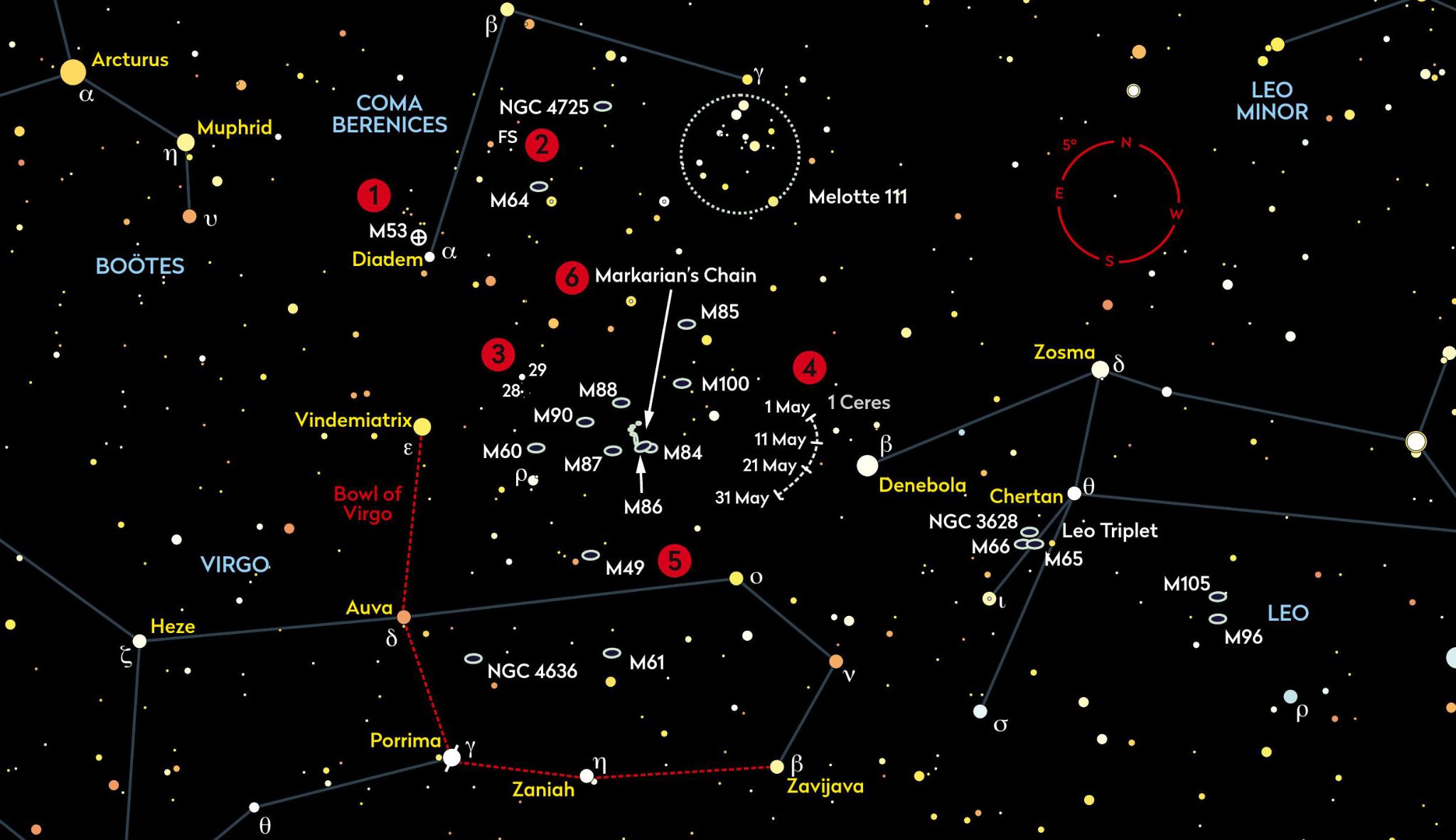Variety is the spice of life as we hunt stars, globulars, galaxies and more near Virgo

1. M53
Recommended equipment: 10 x 50
A degree northeast of mag. +4.3 Diadem (Alpha (α) Comae Berenices), you’ll find a small misty patch which appears to grow in size and brightness if you centre it in the field of view then avert your gaze back to Diadem. The apparent changes, which are typical of globular clusters, demonstrate the difference between direct and averted vision. Practice this technique; you’ll need it later when we seek out the galaxies in Markarian’s Chain.
2. FS Comae
Recommended equipment: 10 x 50
Navigate to a point half-way between Diadem and mag. +4.2 Beta (β) Comae Berenices, then another degree to the west to an orange star, FS Comae, shining somewhere around mag. +6. The magnitude of this semi-regular variable star varies between mag. +6.1 and + 5.3, with a period of 55–58 days. Analysis of the star’s spectrum reveals variations in radial velocity of the star’s surface, which indicates that its variability is due to pulsations in size.
3. 28 &29 Comae
Recommended equipment: 10 x 50
Head 5° northwest of mag. +2.8 Vindemiatrix (Epsilon (ε) Virginis) to a pair of white stars separated by half a degree and orientated roughly north– south. The southerly one is mag. +6.4 28 Comae, brightest of a little parallelogram of stars. Mag. + 5.7 29 Comae is the brightest of a triple star group. The brighter (mag. +8.6) companion is 5 arcminutes back towards 28 Comae, and the fainter (mag. +9.9) one is an arcminute closer.
4. Ceres
Recommended equipment: 10 x 50
Ceres was discovered by Guiseppe Piazzi on the first day of the 19th century and is the only dwarf planet visible in standard binoculars. It fades from mag. +7.8 to mag. +8.4 during the month, but should be easiest to detect around mid-month when the Moon is out of the way and it is 2.2° east of mag. +2.1 Denebola (Beta (β) Leonis).
5. M49
Recommended equipment: 15 x 70
Locate mag. +4.9 Rho (ρ) Virginis and place it on the northeast of your field of view. On the opposite side you should find a pair of sixth-magnitude stars, a little more than a degree apart and orientated southeast–northwest. M49 is the small, slightly oval patch of light between these two. Use averted vision to see how many more galaxies you can detect in this region of sky.
6. Markarian’s Chain
Recommended equipment: 15 x 70
This chain of galaxies, which you may already have detected north of M49, lies almost exactly half way between Vindemiatrix and Denebola. Starting with M84 and M86, you should be able to identify at least the seven brightest galaxies in the chain.